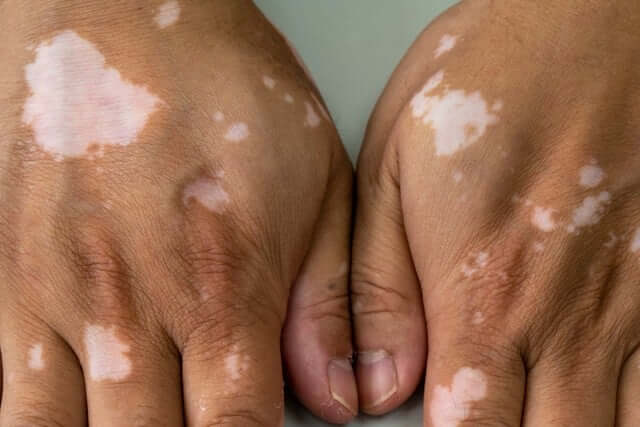VITILIGO CAUSES LOSS OF SKIN COLOUR
London Dermatology | 22 January 2025
Vitiligo, or leukodermia, is a condition in which the skin loses its colour or pigmentation, leaving patches that appear lighter. This condition may also affect colour of the hair and eyes.
While the exact cause of vitiligo is unknown, this condition develops when the immune system destroys cells called melanocytes, which are responsible for producing skin pigmentation. Vitiligo may develop at any age.
Your chances of having vitiligo are increased if you have a family member with the condition, or if you have an autoimmune condition, such as a thyroid disease called Hashimoto’s disease or a hair loss condition called alopecia areata.
Vitiligo causes loss of skin colour, which may occur throughout the body, including the face, elbows and knees, hands and feet, and genitals. It may also affect the hair and inside of the mouth. Although many people do not experience other symptoms, some patients complain of an associated itch in the lesions.
The way in which vitiligo presents vary from person to person:
Discolored patches may occur only on one side or one part of the body in segmental vitiligo. This type of vitiligo may occur early in life and progress for a few years before it stops.
Only one or a few areas of the body may be affected by localized, or focal vitiligo.
Generalized vitiligo may cause discoloration in many different areas of the body. This type is typically symmetrical. For instance, if one hand becomes affected, so will the other.
We cannot hide our skin. Therefore, though vitiligo is not a serious health condition, many people seek treatment for this condition due to the emotional distress caused by widespread symptoms. There are several treatment options available for vitiligo, most of which have side effects.

